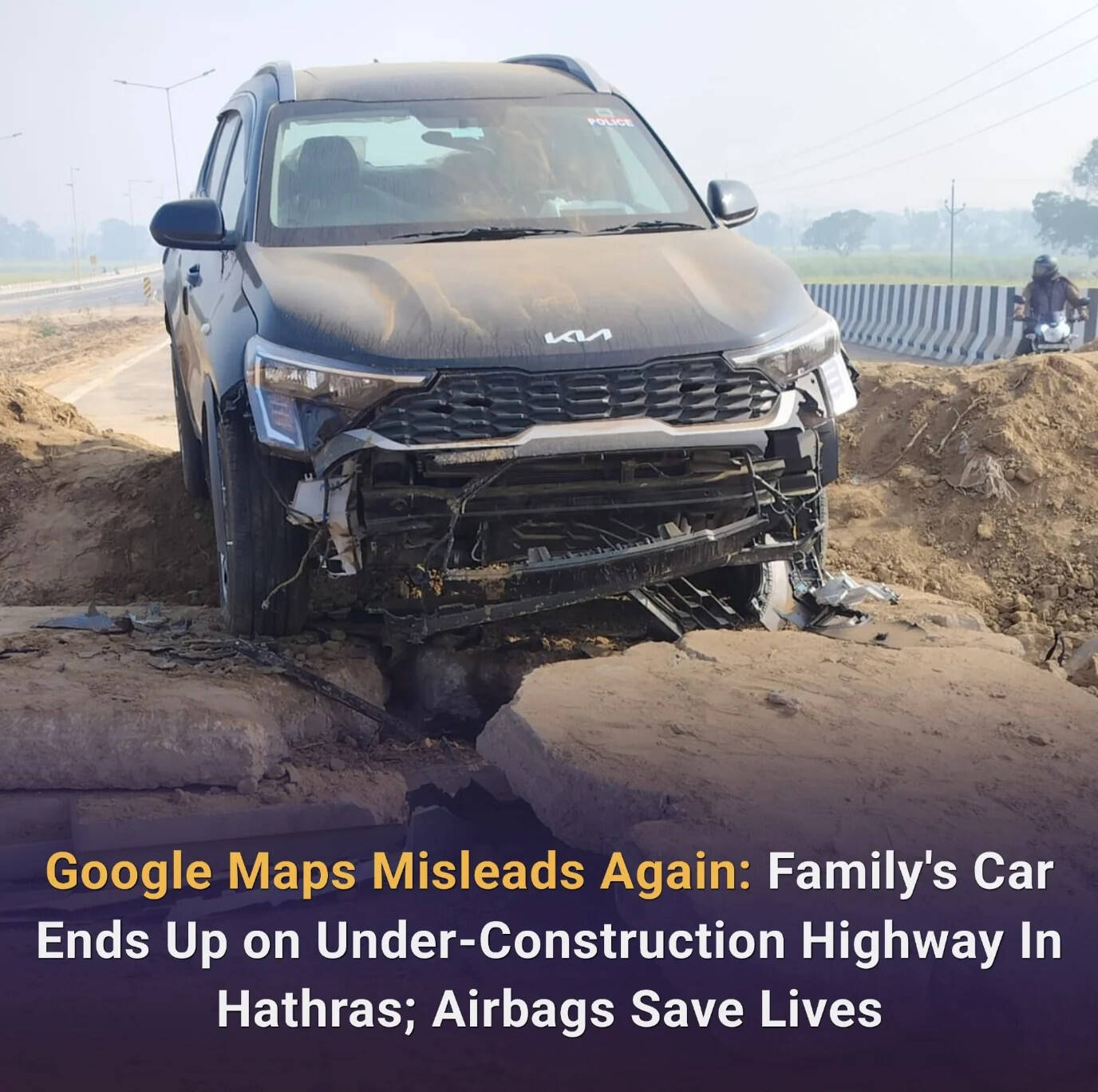Blind Trust in Google Maps Leads to Near-Disaster on Under-Construction Highway in Hathras

In a horrific event in Hathras, Uttar Pradesh, a family's naïve faith in Google Maps nearly brought about catastrophe. Thanks to the navigation app's poor directions, the family unintentionally drove into an under-construction highway while on their trip from Bareilly to Mathural. Luckily, the airbags in their automobile opened in time to save their lives. The family shockingly escaped the crash, which seriously damaged the car unscathed.
Late at night, the episode happened when the family was on their way to Mathura. Like many other travellers, they were using Google Maps to help them negotiate unknown routes. Unaware of it, the GPS system brought them to the Mathura-Bareilly Highway, still under building. The family missed the warning signals or barricades usually marking such incomplete parts of road as vision in the darkness was poor. Rather, they carried on the dangerous stretch ignorant of the possible risk just ahead.
When the car came to a particularly hazardous section of the road, where the building activity had created uneven surfaces and hurdles, the situation became really dire. The family discovered they might be in a possibly fatal predicament as the car lost control. Still, fortune was working for them. Timely deployment of the car's airbags cushions the impact and stops what might have been a fatal collision.
Although the car suffered major damage, the family left the event free from any physical harm. Ensuring the airbags' safety depended critically on their fast reaction. According to experts, airbags are meant to lower the danger of major injuries in high-impact collisions; so, in this regard, they were quite important in minimising damage.
This close encounter draws attention to a rising worry among travellers who mostly rely on navigation tools like Google Maps for direction. Though frequently useful, many programs are not perfect. In this instance, Google Maps neglected to update the highway's building status, therefore guiding the family down a road not yet suitable for traffic. Many drivers rely entirely on these digital assistants without understanding that they do not always represent real-time conditions including road closures, construction zones, or accident frequency.
Particularly construction areas might be difficult for drivers and navigation devices. Usually, detours, barriers, and warning signs help traffic to be guided safely when roads or highways are under construction. But as this story shows, an app that ignores such updates or if the signals are difficult to view at night can readily cause mishaps.
Luckily, this time the family's narrative concluded favourably. Not everyone, meantime, is that fortunate. Professionals advise drivers to remain wary and make use of navigation apps as only one instrument for their trip preparation. Being vigilant is always a smart concept, especially in strange places, and knowing the state of the roads helps.
This event also serves as a wake-up call for tech firms such as Google to enhance their navigation systems by include more real-time updates on road conditions, especially with reference to construction areas. Drivers must have correct and timely knowledge if they are to avoid sometimes fatal circumstances.
Ultimately, the Hathras mishap reminds us of how readily things may go wrong when we rely too much on technology without thinking through the human element. Even if Google Maps and other such applications are rather helpful, drivers still have to be alert, applying their judgement and knowing the road ahead, particularly in cases of apparently off conditions. Fortunately, this family's fast thinking combined with the safety measures of the car kept them safe; nevertheless, next time the result might not be as lucky.
--
